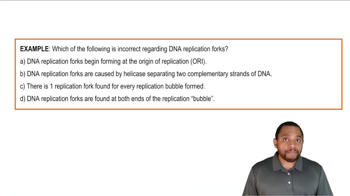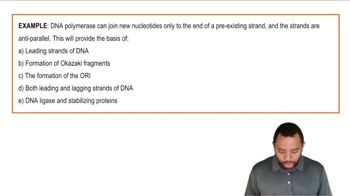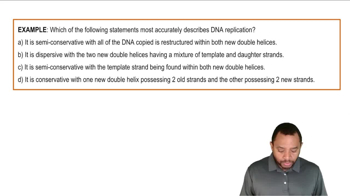Here are the essential concepts you must grasp in order to answer the question correctly.
DNA Replication
DNA replication is the biological process through which a cell duplicates its DNA, resulting in two identical copies. This process is essential for cell division and occurs during the S phase of the cell cycle. It involves unwinding the double helix and synthesizing new strands complementary to each original strand.
Recommended video:
Intro to DNA Replication Example 2
Leading and Lagging Strands
During DNA replication, two types of daughter strands are formed: the leading strand and the lagging strand. The leading strand is synthesized continuously in the direction of the replication fork, while the lagging strand is synthesized in short segments, known as Okazaki fragments, in the opposite direction. This distinction is crucial for understanding how DNA is replicated efficiently.
Recommended video:
Steps of DNA Replication Example 1
Semi-Conservative Replication
DNA replication is described as semi-conservative because each new DNA molecule consists of one original (parental) strand and one newly synthesized (daughter) strand. This mechanism ensures genetic fidelity, as the original strands serve as templates for the formation of the new strands, reducing the likelihood of errors during replication.
Recommended video:
Intro to DNA Replication Example 1
 Verified step by step guidance
Verified step by step guidance Verified video answer for a similar problem:
Verified video answer for a similar problem:



 5:8m
5:8m